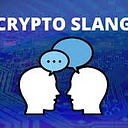Nftperp launched its private beta in November 2022 and quickly amassed notable statistics. Within just two months, the platform facilitated over 50000 trades, totaling 100000 ETH in trading volume.
The NFT financialization space aims to bring liquidity to typically illiquid assets, with perpetual futures for NFTs representing a new primitive, similar to AMMs like Sudoswap and lending/borrowing protocols such as NFTFi.
This article delves into Nftperp’s mechanisms, use cases, and how it contrasts with traditional perpetual swap protocols. Before exploring Nftperp’s specifics, it’s essential to understand how perpetual futures operate.
💭 Perpetual Futures 101
Perpetual futures (or “perps”) are derivative contracts introduced in 2016 by BitMEX. They allow users to buy or sell the value of an underlying asset without an expiry date.
Perpetuals trade independently but are highly correlated with the underlying asset. To maintain the peg between the perpetual price (Mark Price) and the spot price of the underlying (Index Price), funding rates are used. Funding rates are periodic payments made between longs and shorts based on the difference between the Mark Price and Index Price.
Bullish Market: Positive funding rates where long traders pay short traders.
Bearish Market: Negative funding rates where short traders pay long traders.
This mechanism helps converge the Mark Price back to the Index Price.
Considerations for Using Perps:
- Ability to take leveraged positions with the risk of liquidation.
- Ability to take short positions without requiring inventory.
- Cash-settled contracts allow exposure without holding inventory.
- Funding rates may affect profit and loss (P&L).
- Useful for hedging purposes.
Thinking About vAMM Perp DEXs
Two major models for perpetual DEXs have emerged: Central Limit Order Book (CLOB) and Virtual Automated Market Maker (vAMM). Nftperp uses a vAMM model, so this article focuses on that mechanism.
CLOB (e.g., dYdX)
CLOB Perp DEXs offer a trading experience similar to centralized exchanges, using an order book to match trades. Trades are peer-to-peer, requiring counterparties to take the other side, which can delay trade fulfillment. Institutional market makers primarily provide liquidity, centralizing the system to some extent.
vAMM (e.g., Perpetual Protocol)
vAMM Perp DEXs leverage AMM technology where trades are peer-to-pool, with a virtual liquidity pool as the counterparty. Prices are determined by the relative concentration of assets in the pool, using the x*y=k formula. Orders are filled instantly, though large orders may suffer from slippage. vAMMs are more decentralized as they do not rely on institutional market makers.
💭 Mechanics
Nftperp is a vAMM perpetual futures DEX on Arbitrum, using blue-chip NFT collections as underlying assets. Users can trade with up to 5x leverage, with collections like Punks, BAYC, MAYC, Azuki, and Miladies available, and more to be integrated in the future. Currently, trades are conducted with $WETH.
vAMM Mechanism
Major market makers have not yet entered the NFT market-making space due to its nascency and low volumes. CLOB-based NFT perpetual futures DEXs are impractical as they require market makers to provide liquidity. Thus, Nftperp uses a vAMM mechanism with Dynamic Virtual Liquidity (DVL) to manage the vAMM parameters dynamically.
Dynamically Adjusted k to Reduce Slippage: The k constant in the x*y=k formula represents virtual liquidity depth. DVL adjusts k according to market conditions to balance slippage and price convergence.
- Forced Convergence: Nftperp forces Mark Price to Index Price convergence when:
- Mark Price deviates from Index Price by 5% for over 8 hours.
- The insurance fund would be used for funding payments, and forced convergence costs less than future funding expenditure.
- Choice of Assets: Nftperp supports only blue-chip assets due to their lower volatility and higher volume, ensuring efficient price execution.
Index Price Derivation & Funding Rates
Traditional perpetual futures DEXs use oracles to pull Index Prices. Given NFTs’ illiquid nature, using the Last Transacted Price leads to “lumpy” data and potential manipulation.
Nftperp constructs a synthetic Index Price (“True Floor Price”) using Last Transacted Prices from platforms like Opensea, LooksRare, Sudoswap, Blur, and X2Y2. The process involves:
Data Pull & Rolling Average: Collecting and averaging Last Transacted Prices.
Extreme Outlier Removal: Eliminating sales 0.1x or 9x the rolling average.
Determination of Acceptable Price Range (APR): Using a truncated mean and standard deviation.
Creating True Floor Price: Adding sales within APR to the True Floor Price database, updated in real-time with a 4-hour TWAP look-back period.
